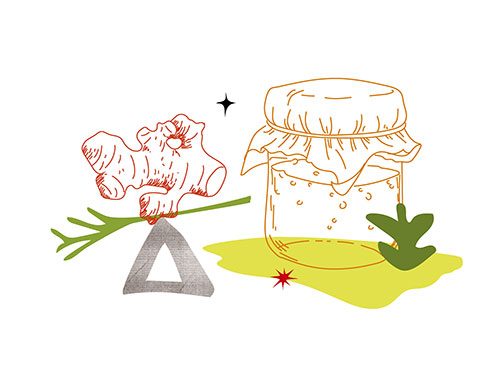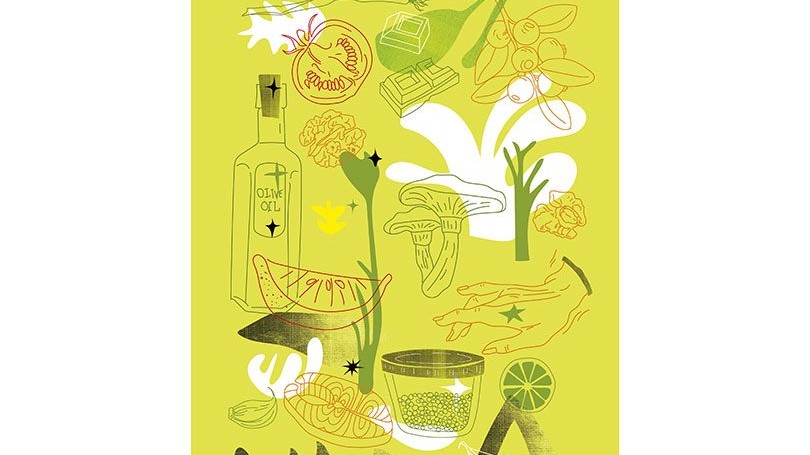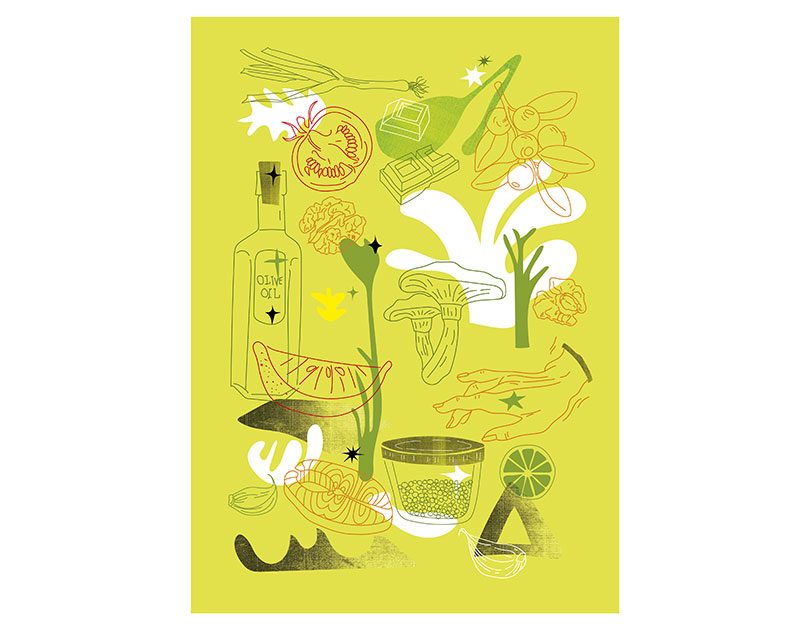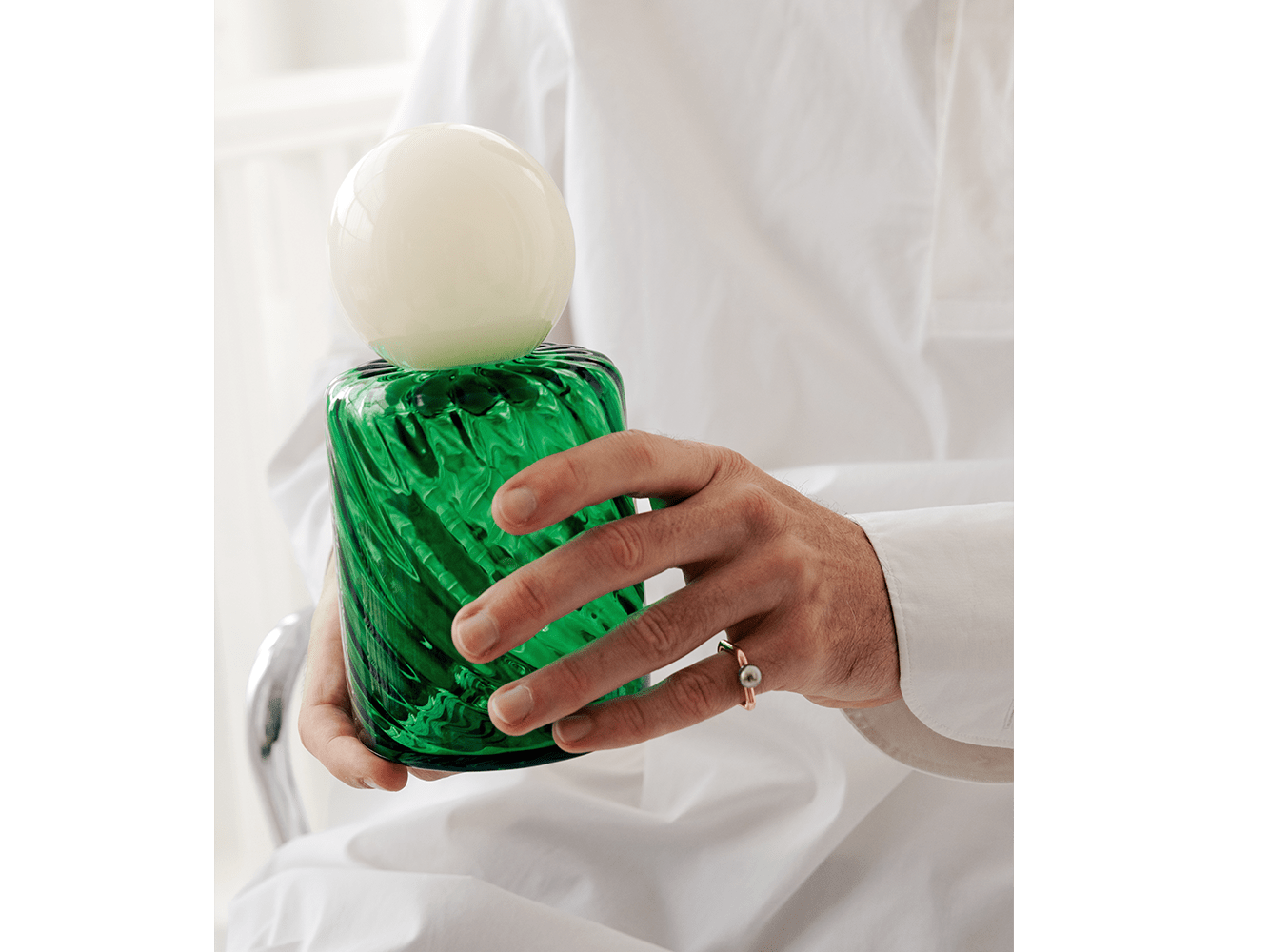David Burton delves into the crisper drawer and the pantry to unearth the food heroes that drive good health.
Reeling from a constant barrage of conflicting advice from nutritionists, politicians and food companies, today’s consumers are often left wondering what they are supposed to eat. Over the past 50 years, a succession of fad diets has attempted to provide an easy answer. The 1970s saw the birth of the joyless Pritikin diet (no egg yolks, no chicken skin) from Nathan Pritikin, who committed suicide. In the 1980s the Hollywood diet started its adherents off on rather a lot of crushed pineapple and then, bizarrely, required them to eat all their proteins and carbohydrates separately.
The early 2000s was the age of the fatty Atkins diet from Dr Atkins, who at his death weighed 114kg. In recent years we’ve seen the paleo diet, which does seem to align with contemporary mainstream nutritional advice, despite advocating a return to Stone Age eating habits. The current favourite, keto (ketogenic), is even stricter on the carbs than paleo but, oddly, allows high fat.
Yet there seems little need to follow any of these prescriptive diets now that modern science has reached consensus on which foods are the healthiest. These are the so-called power foods (otherwise known as superfoods), which yield the most nutrients for the least number of calories and help fight the four great ills of our age: heart failure, cancer, type 2 diabetes and Alzheimer’s.
There are many such foods but here is a list of Cuisine’s favourites, chosen not just on the basis of clinical studies that support the health-giving claims, but also for their delectability.
Olives It’s rare that the hedonist’s food choice also happens to be the healthy option, which makes extra virgin olive oil all the more a treasure. Good-quality extra virgin oil represents a veritable cocktail of powerful antioxidants to combat the risk of cancer, Alzheimer’s, type 2 diabetes, heart failure and stroke. Along with the garlic, red wine, tomatoes, oily fish and citrus elsewhere on this list, olives lie at the heart of the beloved Mediterranean diet that so suits our own climate.
Garlic Since every epicure would agree with French chef Marcel Boulestin that peace and happiness begin where garlic is used in cooking, it’s doubly blissful to inhale that daily whack of crushed garlic wafting up from the frying pan, knowing it’s also helping to keep cancer at bay. The secret is to crush the garlic 10 minutes before you use it. This sparks an important change in the vegetable’s chemical composition, allowing enzyme action to slowly transform the abundant alliin molecules into allicin, a very unstable molecule that itself explodes into about 30 other tiny pungent-smelling molecules. These molecules lower the risk of developing cancers of the digestive system – colon, stomach and oesophagus – all too common in this country.
Red wine We are all aware of the dire health outcomes from a life of heavy drinking, so it’s encouraging to think that the single civilised glass of red wine we enjoy with dinner could be protecting the linings of our heart arteries. Researchers have zeroed in on resveratrol, an antioxidant found in the skins of all grapes that shows up in red wine aplenty. Some studies on resveratrol have drawn no conclusions, but others do indicate a heart benefit, especially in conjunction with the small jolt of alcohol that one or two glasses of wine provide. Resveratol is also believed to be the only dietary molecule that not only retards the growth of cancerous tumours, but also prevents their formation in the first place.
Tomatoes Men in Italy, Spain and Mexico suffer less from prostate cancer than men in countries where tomatoes don’t play such an important part of the diet. This has led researchers to the discovery that lycopene, the red pigment responsible for the tomato’s cheerful colour, lowers the risk of prostate cancer. And by all means cook your tomatoes with olive oil into a Neapolitan-style tomato sauce, as cooking in oil allows easier assimilation of the lycopene into body cells.
Oily fish Mackerel, mullet, sardines and salmon are all high in omega-3 fatty acids, famous for their ability to protect the heart from fatal diseases, and to synthesise anti-inflammatory molecules to impede cancerous tumours.
Citrus Citrus fruits, particularly lemons, are another great pillar of the Mediterranean diet. In addition to vitamin C, citrus fruits also contain monoterpenes and flavanones, both important anti-cancer compounds.
Dark chocolate The next time anybody dares preach about the calories in chocolate, you can safely inform them that your daily two squares of 70 per cent dark chocolate are not eaten as an indulgence but strictly for health purposes, to ensure an adequate dose of polyphenols. More specifically, we seek a class of polyphenol known collectively as proanthocyanidins. These molecules, similar to those found in berries and green tea, have been shown to slow down the growth of some cancers induced by carcinogenic substances. Dark chocolate is also rich in antioxidants and magnesium, which many people lack, and its prebiotic fibre feeds healthy gut bacteria.
Probiotics Our long and winding digestive tract exposes our body to direct contact with the outside world – and to all the nasty bacteria that inhabit it. As an ally in the war against these pathogenic bacteria, we need to ingest other altogether more friendly bacteria – various lactic bacteria such as lactobacilli and bifidobacteria, known collectively as probiotics. Most famously, we get these friendly bacteria from yoghurt containing large amounts of bifidobacteria and/or Lactobacillus acidophilus, but they are also to be found in kimchi, kombucha, miso, natto, sauerkraut, tempeh and other fermented foods. The lactic bacteria don’t last long in our guts, so we need to constantly replenish them.
Nuts
Walnuts It’s entirely fitting that the walnut is shaped like a tiny brain, since this nut’s polyphenols, vitamin E and polyunsaturated fat combine to reduce inflammation and oxidative damage to your own nut, helping you process ideas faster, retain your memory and thus fight off Alzheimer’s. By decreasing hunger and thus controlling weight, walnuts indirectly help to manage type 2 diabetes. Most famously, walnuts are significantly higher in heart-healthy omega-3 than any other nut.
Almonds Almonds are the perfect snack food. While they are calorific, 10-15 per cent of these calories are not absorbed into the body and a study of 137 participants (reported in the European Journal of Clinical Nutrition) found that a daily 43g serving of almonds reduced hunger and the desire to eat. Being low in carbs but high in healthy fats and fibre, they are equally perfect for sufferers of type 2 diabetes, especially since diabetics are often deficient in the magnesium that almonds also provide. This magnesium lowers blood-sugar levels and also helps to control blood pressure. Unskinned, rather than blanched, almonds, are preferable from a nutritional point of view: almond skins contain most of this nut’s powerful antioxidants (especially its abundant vitamin E), which resist the onset of inflammation, cancer, Alzheimer’s and ageing.
Seeds
Flax seeds ‘Flax seed’ is the modern, more appealing name for the worthy but not especially delicious linseed. The earthy odour is more pronounced when the seeds have been freshly ground, which unfortunately is how you must eat them if you are to fully reap the benefit of their omega-3 fatty acids. Like soy beans, flax seeds contain a lot of phytoestrogens, which attenuate the harmful effects of high levels of oestrogen hormones.
Pumpkin seeds Pumpkin seeds are full of antioxidants (especially carotenoids and vitamin E) which reduce blood pressure, bad cholesterol and the inflammation associated with cancer. Specifically, test tube and observational studies have shown that pumpkin seeds potentially control prostate cancer in men, and breast cancer in women. The high magnesium content in pumpkin seed is great for the treatment of diabetes, since several studies indicate that pumpkin-seed powder reduces blood-sugar levels.

Spices
Many spices have anti-cancer properties as do the herbs of the Lamiaceae family (mint, thyme, oregano, basil, rosemary) and the Apiaceae family (parsley, coriander, fennel, anise, chervil). However, of particular note is the Zingiberaceae family, whose members include ginger and turmeric.
Ginger The magic substance in ginger is gingerol, a powerful anti-inflammatory that is shown to lessen symptoms in patients suffering from rheumatoid arthritis. Since inflammation contributes to the onset of cancer, ginger helps here too.
Turmeric Very similar to gingerol in its anti-inflammatory effects is curcumin, the active ingredient in turmeric. Curcumin and gingerol both target cancer cells, forcing them to self-destruct, or they may prevent the formation of new blood vessels used to grow the tumour. Mixing turmeric with oil and using it in conjunction with black pepper greatly aids with its absorption.
Legumes Legumes, a large, very well-known family, are best friends to any protein-seeking vegetarian. They include green peas, fresh and dried beans, chickpeas, lentils, peanuts, carob and tamarind. Besides their satiating protein and fibre, legumes reduce cholesterol. They all provide large amounts of resistant starch, lower blood-sugar levels for diabetics and boost healthy gut bacteria.
Mushrooms Expensive gourmet mushrooms – shiitake, enoki and oyster mushrooms – not only taste more deliciously complex but they have also been shown to possess powerful anti-cancer molecules that slow the growth of tumours. That said, even the standard supermarket button and portobello mushrooms can boast lectins which, in laboratory conditions, have been shown to impede the growth of some cancer cells.
Berries
Few of us need encouragement to eat more berries, but an added incentive is the happy thought that all those anti-cancer molecules contained within.
Blueberries The anthocyanin molecules found in blueberries are able to block the formation of proteins essential to the growth of cancer. These molecules fight the formation of new blood vessels around the tumour, and in so doing deprive it of the oxygen it needs for growth.
Raspberries & strawberries Ellagic acid, found in significant amounts in both raspberries and strawberries, works in exactly the same way as the anthocyanins found in blueberries.
Resistant starches
If there’s a theme that runs through many modern ‘diets’, it’s the consistent downplaying of carbohydrates, which convert to sugar as we digest them. But it’s not that simple. There are significant health benefits to so-called resistant starches, which escape digestion and proceed down into your colon, there to feed it with friendly bacteria.
Oats A quarter of the starch in oats is resistant starch. Oats are packed with linoleic acid and soluble fibre to help lower cholesterol and aid digestion. They are also full of satiating protein, 80 per cent of which is avenalin. This is similar to legume proteins but not found in any other grain.
Reheated pasta, rice and potato Recent research indicates that a type of resistant starch is created when these carbohydrates are cooked and then allowed to go cold. The benefits are maintained (indeed, slightly increased) when you reheat the pasta, rice or potato before serving.
SEE MORE FROM CUISINE
Design File / Sara Bruce / Exhibit A / Auckland
The contents in a cold glass should be savoured. Having one superb…
When only the very best will do
How Bocuse d’Or Team New Zealand will meet the highest standards at…






